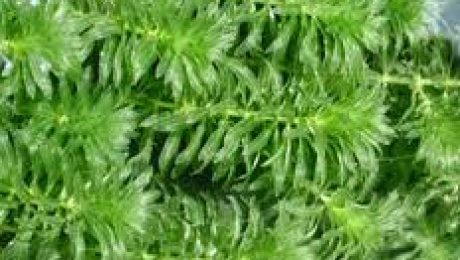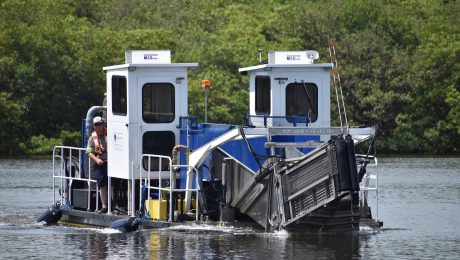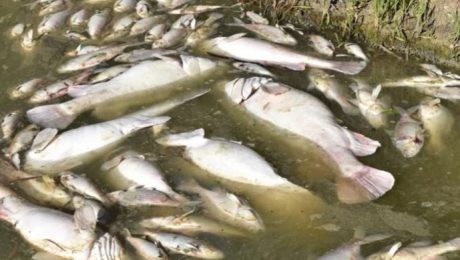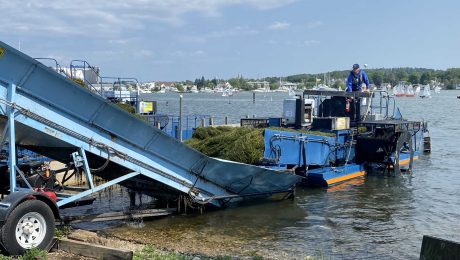Wildlife populations, including birds, mammals, amphibians, reptiles and fish, have seen an average 69% decline since 1970, according to the World Wide Fund for Nature’s (Formerly World Wildlife Fund) Living Planet Report (LPR) 2022. The report also highlights that freshwater aquatic life has also decreased by 83% globally in the last 50 years. The exploitation
In 2013, 6,000 sterile grass carp were introduced into Smith Mountain Lake, Virginia, to combat the growth of invasive aquatic vegetation such as hydrilla which has seen a massive growth around the lake. When hydrilla was first discovered at the lake in 2007, a patch of the aquatic weeds were just a few acres in
Congratulations are in order to Buffalo Lake Protection & Rehabilitation District! Our customer recently mentioned they removed 1300 loads of weeds so far this year with their fleet of Aquarius equipment. Buffalo Lake is actually a flowage consisting of 2500 acres and is very shallow with a maximum depth of 8 feet. The shallow waters
Salt in water sources becoming worrisome in D.C. region, experts warn By Antonio Olivo August 8, 2022 at 6:00 a.m. EDT The Washington region is growing — a metropolis of nearly 6 million people where area officials are pressing to build another 320,000 homes by the end of this decade. And with that growth comes
Climate change affects creatures around the world. But land animals may have a slight advantage over marine species in running from the ill effects of global warming: the ability to escape. The oceans absorb the majority of the excess heat. Because they distribute the heat widely, ocean temperature gains are subtle. But, even a small
Mayor Jane Castor christened Tampa’s newest addition Saturday morning with the ceremonial breaking of a champagne bottle across the boat’s bow. Named the “Litter Skimmer,” this Aquatic Trash Skimmer will remove marine debris from the waterways in the City of Tampa as part of the Mayors “Keep it Clean, Tampa” initiative. This custom debris skimmer
Following reports of hundreds of dead fish floating in Bayou Rouge in Cottonport, Louisiana, the Louisiana Department of Wildlife and Fisheries (LDWF) conducted an investigation to find out what caused the fish kill. Officials determined that that fish died from a low dissolved oxygen level in the water, basically suffocating the fish. The low dissolved
What began as a shallow feeder lake for the Miami & Erie Canal in the 19th century, later turned into a popular resort park after the canal era ended in Ohio. Today, Indian Lake offers a variety of on-the-water recreational options including boating, fishing, jet skiing, and swimming. And, officials are dealing with an unprecedented
Wisconsin Company’ Products Contribute to Clean Water and Post-flood Food Delivery in Africa The U.S. Commercial Service recently presented an Export Achievement Award to one of its longtime clients, Aquarius Systems of North Prairie, Wisconsin. The company was lauded for its contributions to water purification in Malawi and for expanding into the South Sudan. Using
The City of Sturgeon Bay, Wisconsin, has four marinas with a lot of yachts and people spending their summers on the boats. The water level in the bay is down a foot from what it was last year, and it is predicted there will be more problems with weed growth. The city applies for a










